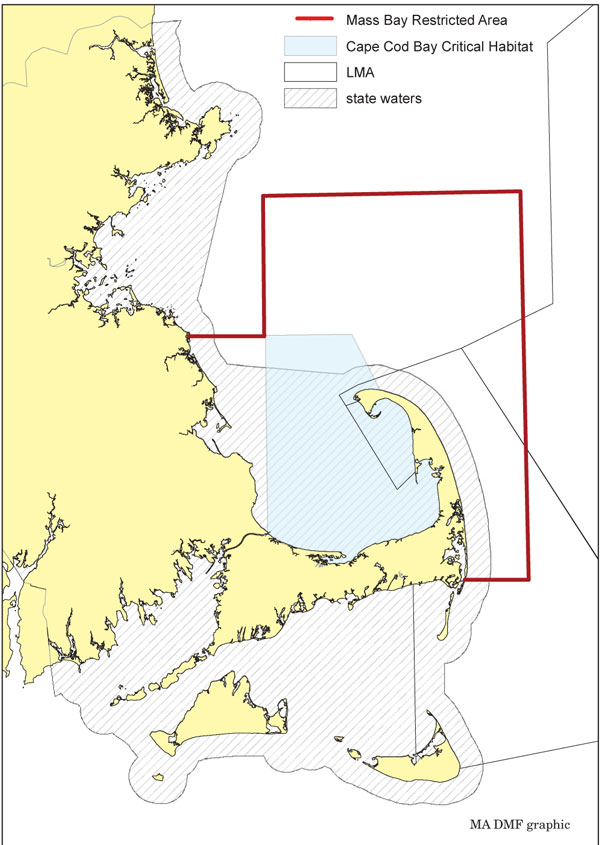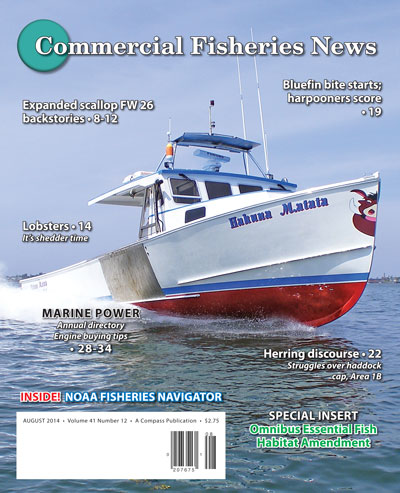GLOUCESTER, MA – The latest adjustment to the Atlantic Large Whale Take Reduction Plan (ALWTRP), published by the National Marine Fisheries Service (NMFS) on June 27, includes significant new requirements that will affect many people in the lobster, fish pot, and gillnet fisheries in the Northeast and down the Atlantic coast.
The so-called “vertical line rule” establishes: costly and time-consuming gear-marking requirements; minimum-trap-per-trawl rules that are raising safety concerns in some parts of the industry; and an enormous seasonal closure area that will impact more than 100 Massachusetts lobstermen.
 This is the first major modification to the ALWTRP since 2009 when the sinking groundline rule went into effect, requiring lobstermen, gillnetters, and other fixed gear fishermen operating outside of inshore exemption areas to switch out their floating groundlines for more expensive, less durable sink rope.
This is the first major modification to the ALWTRP since 2009 when the sinking groundline rule went into effect, requiring lobstermen, gillnetters, and other fixed gear fishermen operating outside of inshore exemption areas to switch out their floating groundlines for more expensive, less durable sink rope.
Soon after that, the Atlantic Large Whale Take Reduction Team (TRT), an advisory group made up of fishing industry representatives and whale conservationists, began working on the next step in its ongoing consensus process to reduce the risk to large whales of entanglement in fishing gear.
The objective this time around was to bring down the entanglement risk posed by vertical lines in the water. Working with the TRT, NMFS developed a “vertical line model” that basically overlapped estimates of the number of vertical lines used in trap/pot and gillnet fisheries from Maine to Florida with sightings of large whale species. The goal of this “co-occurrence” approach was to identify areas where the likelihood of interaction between whales and vertical lines was the highest…

Read the rest and much, much more in the August issue of Commercial Fisheries News.
Read online immediately and download for future reference.







 Updating...
Updating...